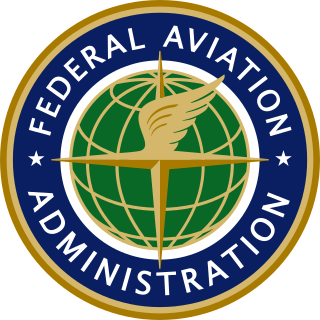Top Qs
Timeline
Chat
Perspective
Advisory circular
Publication offered by the Federal Aviation Administration From Wikipedia, the free encyclopedia
Remove ads
Advisory circular (AC) refers to a type of publication offered by the Federal Aviation Administration (FAA) to "provide a single, uniform, agency-wide system … to deliver advisory (non-regulatory) material to the aviation community."[1] Advisory circulars are now harmonized with soft law Acceptable Means of Compliance (AMC) publications of EASA, which are nearly identical in content. The FAA's Advisory Circular System is defined in FAA Order 1320.46D.[2]
By writing advisory circulars, the FAA can provide guidance for compliance with airworthiness regulations, pilot certifications, operational standards, training standards, and any other rules within the 14 CFR Aeronautics and Space title, aka 14 CRF or FARs. The FAA also uses advisory circulars to officially recognize "acceptable means, but not the only means," of accomplishing or showing compliance with airworthiness regulations.[3][4] Advisory circulars may also contain explanations, clarifications, best practices, or other information of use to the aviation community.[2][5]
Remove ads
Usage
Advisory circulars can recognize industry standards from SAE (ARP), RTCA (DO), and others.[6] With harmonization of technical content and guidance between EASA and the FAA, later advisory circulars also identify corresponding EUROCAE (ED) publications.[7]
Some advisory circulars are only a few pages long and do little more than reference a recommended standard; for example, AC 20-152 referencing DO-254.[8] Others, like AC 20-115C/D, are considerably longer; in this case including guidance on how to transition from DO-178 revision B to C[9] while AC 20-152A adds several new objectives to an otherwise unchanged DO-254.
Remove ads
Relation to regulations
Summarize
Perspective
Generally informative in nature, Advisory Circulars are neither binding nor regulatory; yet some have the effect of de facto standards or regulations.[10] The FAA establishes regulation of U.S. civil airspace through issuance of Federal Aviation Regulations (FAR). Issuing or amending FARs requires a potentially lengthy period of public commentary and agency reflection on proposed rule making before they may be issued for enforcement. In practice, advisory circulars have essential roles for public compliance with the regulations. The FAA relies on the advisory circular system to
- "Provide an acceptable, clearly understood method for complying with a regulation"
- "Standardize implementation of a regulation or harmonize implementation for the international aviation community"
- "Resolve a general misunderstanding of a regulation"
- "Help the industry and FAA effectively implement a regulation"[11]
In contrast with the lengthy processes of FARs, advisory circulars may be published with little or no advanced notice or distribution. A concern is that the content of advisory circulars should not have the effect of de facto amendments to regulations.[12] In general, the FAA may not "use an AC to add, reduce, or change a regulatory requirement."[13]
Remove ads
See also
- Airworthiness Directive (in comparison, airworthiness directives are legally enforceable rules)
References
Wikiwand - on
Seamless Wikipedia browsing. On steroids.
Remove ads

